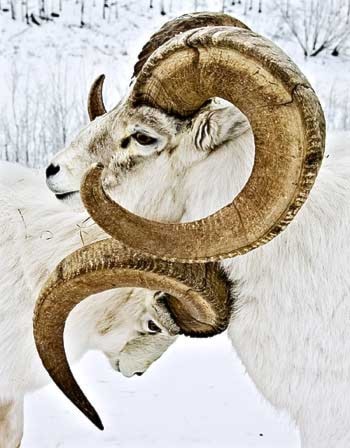Hunters will be able to shoot up to six Dall sheep from Pilot Mountain this season.
The hunt goes against the wishes of the Laberge Renewable Resources Council, which wants to see a two-year ban on hunting in the area, 50 kilometres north of Whitehorse.
The sheep population has grown in recent years to about 175. But only about 30 per cent of these sheep are rams.
The council fears overhunting has thinned out ram numbers, and that continued hunting may lead to a future population decline unless something is done.
And it’s not alone.
The Yukon Fish and Wildlife Management Board backed the idea of a two-year ban, but its formal recommendation was rejected by Environment Minister Elaine Taylor.
Making the dispute all the more unusual, Don Hutton, a biologist and outgoing chair of the management board, has openly criticized the government for rejecting the proposal. Hutton, a former president of the Yukon Party, is not one to criticize the government without reason.
The ban proposal is not being made on a whim.
Backing the council and board’s recommendation is Manfred Hoefs, a retired wildlife biologist who has studied Yukon’s Dall sheep for 40 years, beginning when he visited the territory as a UBC graduate student in 1969.
“Definitely, heavy hunting was one of the factors” for the current sex imbalance, said Hoefs.
The Environment Department disagrees. It sees fluctuating annual lamb crops as the biggest determining factor of how many rams occupy Pilot Mountain.
And “the pattern is better and better lamb crops,” said Rob Florkiewicz, manager of species programs.
It usually takes a ram eight years to grow its horns to full-curl, although rams on Pilot Mountain may mature as early as six years. It’s one reason why sheep on Pilot Mountain have been favoured by hunters.
The years 2000 and 2001 yielded particularly poor lamb crops on Pilot Mountain, with estimates of fewer than 20 lambs being born during those years. But they are followed by surging lamb numbers for the next five years, with more than 40 lambs born in 2006.
But Hoefs doubts demographics will solve the sex imbalance quickly.
And he fears that, as older rams are picked off by hunters, the sheep will lose knowledge passed down from generation to generation about where to find food in the winter and the best places to lamb.
“They teach each other what to do,” he said.
A growing proportion of rams shot in recent years, while full-curl, are younger than eight years old. This suggests to Hoefs that fewer old rams remain.
But the four rams shot by licensed hunters in 2008 show a wide spread in ages, counters Florkiewicz. They were six, eight, nine and 13 years old.
“This 13-year-old lived to tell the tale,” he said.
The territory’s sheep guidelines suggest there be 40 rams for every 100 sheep. Rams only make up 30 per cent of Pilot Mountain’s population.
It appears the Environment Department is bending its own rules, said Hoefs.
Indeed, the department is reviewing its sheep guidelines. But there isn’t anything nefarious about that, said Florkiewicz.
Instead, “science is catching up,” he said.
Rams only make up 33 per cent of Pilot Mountain’s population, according to historic averages compiled from 12 surveys conducted over 30 years.
Until now, there has been an open season on hunting Pilot Mountain sheep.
Six hunting permits will be released this season. The number is based on the rationale that, on average, sheep hunters enjoy a 30 to 50 per cent success rate. The department expects three sheep to be taken.
Hoefs would be surprised if any fewer than six sheep are bagged. The sheep on Pilot Mountain are isolated and now within easy reach of hunters.
It was once necessary to make a week-long excursion by horse to reach the sheep. But, thanks to all-terrain vehicles, hunters may now make an afternoon trip from Whitehorse up the mountain and back.
“I’d almost bet anyone who gets a permit will get a sheep,” said Hoefs.
This may happen, concedes Florkiewicz.
“That’s a risk,” he said. If all six sheep are taken, “we’d have to relook at it,” he said.
Contact John Thompson at
johnt@yukon-news.com.
